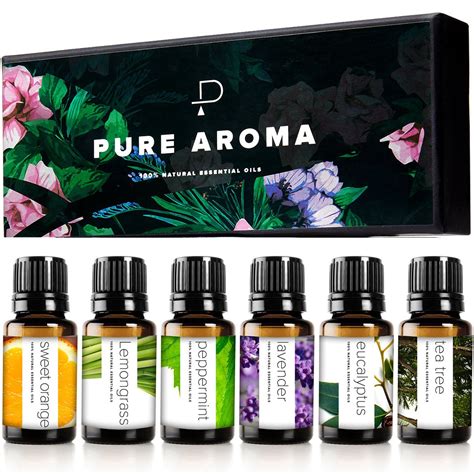Essential Oil Carriers: 10 Must-Haves for Optimal Aromatherapy

In the realm of essential oils, a carrier oil is an indispensable companion. These versatile liquids not only extend the shelf life of your precious oils but also enhance their dispersal and absorption, unlocking the full potential of their therapeutic benefits.
Understanding the Role of Essential Oil Carriers
Essential oils are highly concentrated botanical extracts that can be irritating to the skin when applied undiluted. Carrier oils, often derived from plant-based sources, serve as a gentle medium to dilute the oils and facilitate their safe topical application.
Selecting the Perfect Essential Oil Carrier
Choosing the ideal carrier oil is crucial to maximize the efficacy of your aromatherapy treatments. Factors to consider include:
- Absorption rate: Different carrier oils have varying absorption rates, influencing how quickly and deeply the essential oils penetrate the skin.
- Comedogenicity: Some carrier oils are more likely to clog pores, making them less suitable for acne-prone skin.
- Aroma: The aroma of the carrier oil should not overpower or interfere with the therapeutic effects of the essential oils.
Table 1: Essential Oil Carriers by Absorption Rate
| Carrier Oil | Absorption Rate |
|---|---|
| Fractionated Coconut Oil | Slow |
| Jojoba Oil | Medium |
| Argan Oil | Fast |
| Avocado Oil | Slow |
| Sweet Almond Oil | Medium |
Table 2: Essential Oil Carriers for Specific Skin Types
| Skin Type | Suitable Carrier Oils |
|---|---|
| Dry skin | Argan Oil, Avocado Oil, Jojoba Oil |
| Oily skin | Fractionated Coconut Oil, Grape Seed Oil |
| Sensitive skin | Rosehip Oil, Sweet Almond Oil, Jojoba Oil |
| Acne-prone skin | Fractionated Coconut Oil, Jojoba Oil |
10 Essential Essential Oil Carriers
With countless carrier oils available, here are 10 of the most popular and effective choices:
- Fractionated Coconut Oil: A lightweight, non-comedogenic oil with a neutral aroma and slow absorption rate.
- Jojoba Oil: Known for its close resemblance to the skin’s natural sebum, offering medium absorption and skin-softening properties.
- Argan Oil: Rich in antioxidants, argan oil has a fast absorption rate and is ideal for dry and mature skin.
- Avocado Oil: A thick, nourishing oil with a slow absorption rate, suitable for deeply moisturizing dry and damaged skin.
- Sweet Almond Oil: A gentle, medium-absorption oil with a delicate aroma, suitable for all skin types.
- Grape Seed Oil: A lightweight, non-comedogenic oil with a fast absorption rate, ideal for oily and acne-prone skin.
- Rosehip Oil: Known for its regenerative properties, rosehip oil has a slow absorption rate and is suitable for dry, damaged, and sensitive skin.
- Sunflower Oil: A versatile, medium-absorption oil with a neutral aroma, suitable for most skin types.
- Apricot Kernel Oil: A lightweight, fast-absorbing oil with a sweet, nutty aroma, suitable for all skin types.
- Sesame Oil: A warm, medium-absorption oil with an earthy aroma, known for its anti-inflammatory properties.
Innovative Applications for Essential Oil Carriers
Beyond their traditional role in aromatherapy, essential oil carriers can be used in a variety of creative and effective ways:
- Diffuser blends: Enhance the aroma and therapeutic effects of essential oils by adding a few drops of carrier oil to your diffuser.
- Massage oils: Combine essential oils with carrier oils to create personalized massage blends for relaxation, pain relief, or skin nourishment.
- Hair treatments: Enrich your hair treatments by adding a few drops of carrier oil to your shampoo or conditioner for added moisture and shine.
- Bath bombs: Incorporate essential oils and carrier oils into your bath bomb recipes for a relaxing and aromatic bathing experience.
- Skincare formulations: Use carrier oils as the base for homemade skincare products such as lotions, serums, and masks.
Step-by-Step Guide to Using Essential Oil Carriers
- Choose the right carrier oil: Consider your skin type and the desired therapeutic effects when selecting a carrier oil.
- Determine the dilution ratio: The appropriate dilution ratio depends on the essential oil(s) being used. Refer to the manufacturer’s instructions or consult with a qualified aromatherapist.
- Mix the oils: Combine the essential oils and carrier oil in a glass container and stir until thoroughly blended.
- Store properly: Store the diluted oil in a cool, dark place to preserve its potency.
- Apply as directed: Follow the recommended application method for the specific treatment you are using (e.g., topical application, diffusion, inhalation).
Effective Strategies for Using Essential Oil Carriers
- Start with a small amount: Begin with a low dilution ratio and gradually increase it as needed to avoid skin irritation.
- Test for skin sensitivity: Always perform a patch test on a small area of skin before using essential oils on a larger scale.
- Use high-quality oils: Invest in pure, therapeutic-grade essential oils and carrier oils from reputable sources.
- Consult a qualified aromatherapist: Seek professional guidance to ensure safe and effective use of essential oils.
Conclusion
Essential oil carriers are an essential tool for anyone seeking to harness the therapeutic benefits of aromatherapy. By choosing the right carrier oil for your specific needs and following proper application techniques, you can unlock the full potential of these precious botanical extracts and enhance your overall well-being.
